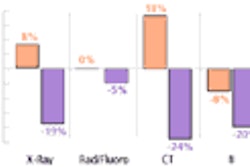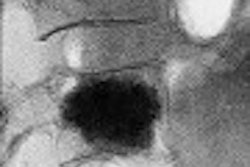(Radiology Review) Melbourne radiologists reviewed the results of percutaneous intervention of hilar biliary malignancies performed at Royal Melbourne Hospital over a 10-year period.
Patients with hilar biliary malignancy mostly present with obstructive jaundice and are surgically treated or have percutaneous or endoscopic intervention, chemotherapy and or radiation therapy, according to Dr Michael Hii and colleagues. Their study of 99 patients was published in Australasian Radiology.
The authors considered a malignancy to be hilar biliary when the confluence of right and left hepatic ducts or the proximal 2 cm of the common hepatic duct was involved. Cholangiocarcinoma and gallbladder carcinoma are the most common hilar biliary malignancy.
"Sixty-nine patients were treated with insertion of semipermanent stents, 19 had external drain tubes, and 25 received percutaneous access of iridium brachytherapy," they reported. In 87% of patients adequate biliary drainage was achieved. Ninety-six percent of patients planned for brachytherapy had successful percutaneous access placed.
Stent utilization was operator dependent. However, as the success of the Wall stent became apparent, this type of stent was much more widely used as the study progressed. Reintervention was necessary in 40% of patients with Wall stents, in 41% of patients with plastic endoprostheses, and in 63% of patients with external drainage.
When stent failure occurred, patients underwent external drainage. Internal-external drainage was used when a stricture was crossed, but a stent not deployed or not considered adequate. "Average survival rate for the entire patient population was 227.3 days," they reported.
The authors determined that "longer survival times and lower complication rates are observed with metal stents in comparison with plastic stents." Patients unfit for surgery are good candidates for percutaneous intervention, and the authors considered this an important treatment option that enabled reasonable survival with good palliation in most patients.
Role of radiology in the treatment of malignant hilar biliary strictures 2: 10 years of single-institution experience with percutaneous treatmentHii, MWJ, et. al.
Department of radiology, Royal Melbourne Hospital, Melbourne, Australia.
Australasian Radiology 2003 December; 47:393-403
By Radiology Review
February 27, 2004
Copyright © 2004 AuntMinnie.com



















